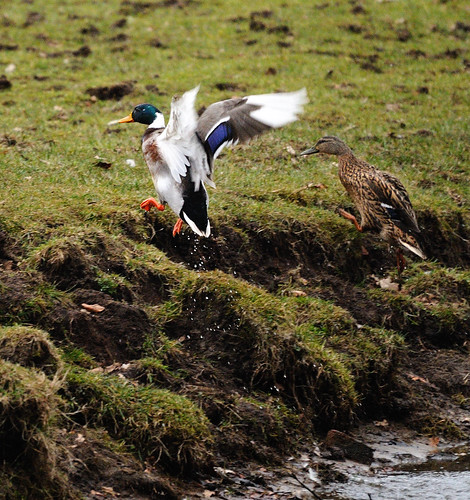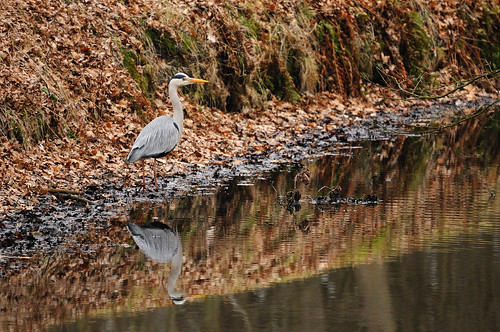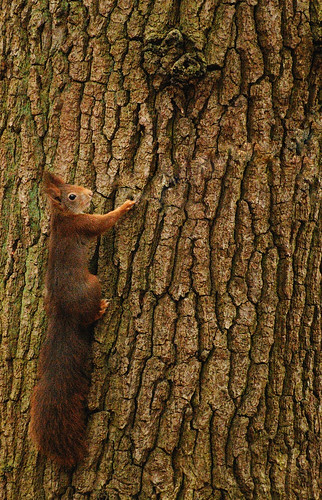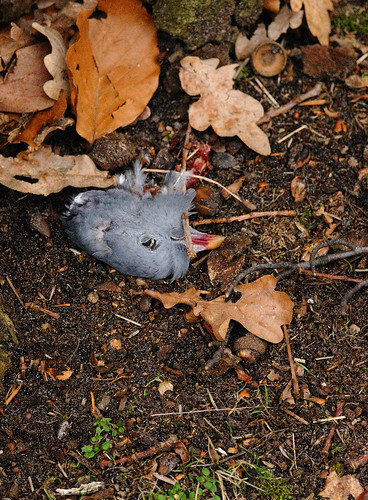(all pics are clickable)
Sunday morning, solid grey sky which is supposed to be good for bird photography since it provides a uniform diffuse light.
Now, my D300 tends to produce a fairly exact white balance in this kind of weather. That means that all the pics on automatic WB will get a rather blueish tint. I like to produce pictures that are a bit warmer in tone so I set it to 5880K. A value I know from experience will produce something I like. I gambled that it would work and save me time in processing.
There must be spring in the air, everything was rather restless. First thing I noticed were some very common mallards. Probably the most common waterfowl species here but good practice nonetheless.

Worked a bit on the exact crop and contrast. The result isn't too bad.
Exposure: 0.002 sec (1/500)
Aperture: f/5.6
Focal Length: 270 mm
Focal Length: 269.1 mm
ISO Speed: 1600
So, autoiso worked this time. I'd set the camera for 1/500 in S mode and the camera put the lens wide open and upped the iso all the way. Not very much light then.
The egyptian geese were feeling the spring as well, chasing eachother, even landing in trees to make noise at eachother. Using the AF button still does the trick:

Exposure: 0.001 sec (1/800)
Aperture: f/5.6
Focal Length: 300 mm
Focal Length: 302.0 mm
ISO Speed: 1600
Good thing I raised the shutter speed I think. Still, wide open at 300mm and iso 1600, it's not going to get me the best of pics.
In a stream in the woods I noticed a grey heron. Rather small bird for a heron. Not entirely sure what caused the focus error here but I do like the lines and the reflection.

Exposure: 0.002 sec (1/500)
Aperture: f/5.6
Focal Length: 250 mm
Focal Length: 254.0 mm
ISO Speed: 1600
Now, the first red squirrel of the season. Rather tricky animal to shoot, they don't sit still and if they do its often at the top of the tree. Up there the challenge is an often bright background and a very dark subject. That requires careful metering.
The unedited shot:

Click it and you will see a squirrel. Settings:
Exposure: 0.002 sec (1/640)
Aperture: f/5.6
Focal Length: 270 mm
Focal Length: 277.0 mm
ISO Speed: 1600
Ah, the camera did what I told it to do. Shutter speed is the speed I set, iso is at the limit I set in auto iso and the lens is as far open as it can go. That it's underexposed is not the cameras fault, there just wasn't any more light.
But, I'm shooting a D300 and that allows for some room in post processing. So, into capture NX and see what I can do with it.

By no means the best squirrel shot in the world but it's a lot nicer. I correct exposure here by almost 1.5 stops, played with the curves, cropped, adjust color balance somewhat, slapped on a contrast adjustment filter and this is the result.
Of course there is noise, there are limits to the D300 sensor and certainly to my processing skills. No matter how good your sensor is, when you underexpose and correct that you will get a load more noise than on a properly exposed picture.
Last shot, something you will encounter sometimes, the leftovers of a predator's meal. There's a big flock of pigeons in that area and occasionally the buzzards get lucky and catch one.

Gruesome perhaps but nature all the same.
So, lessons learned
- Auto ISO in S mode is good for birds in flight and rapidly changing light conditions
- If there isn't enough light your pictures won't come out as nice.
- Fieldcraft continues to be a challenge
- There is at least some truth to diffuse light being good for birds.
- Presetting white balance will save time in processing if you get it right.
No comments:
Post a Comment